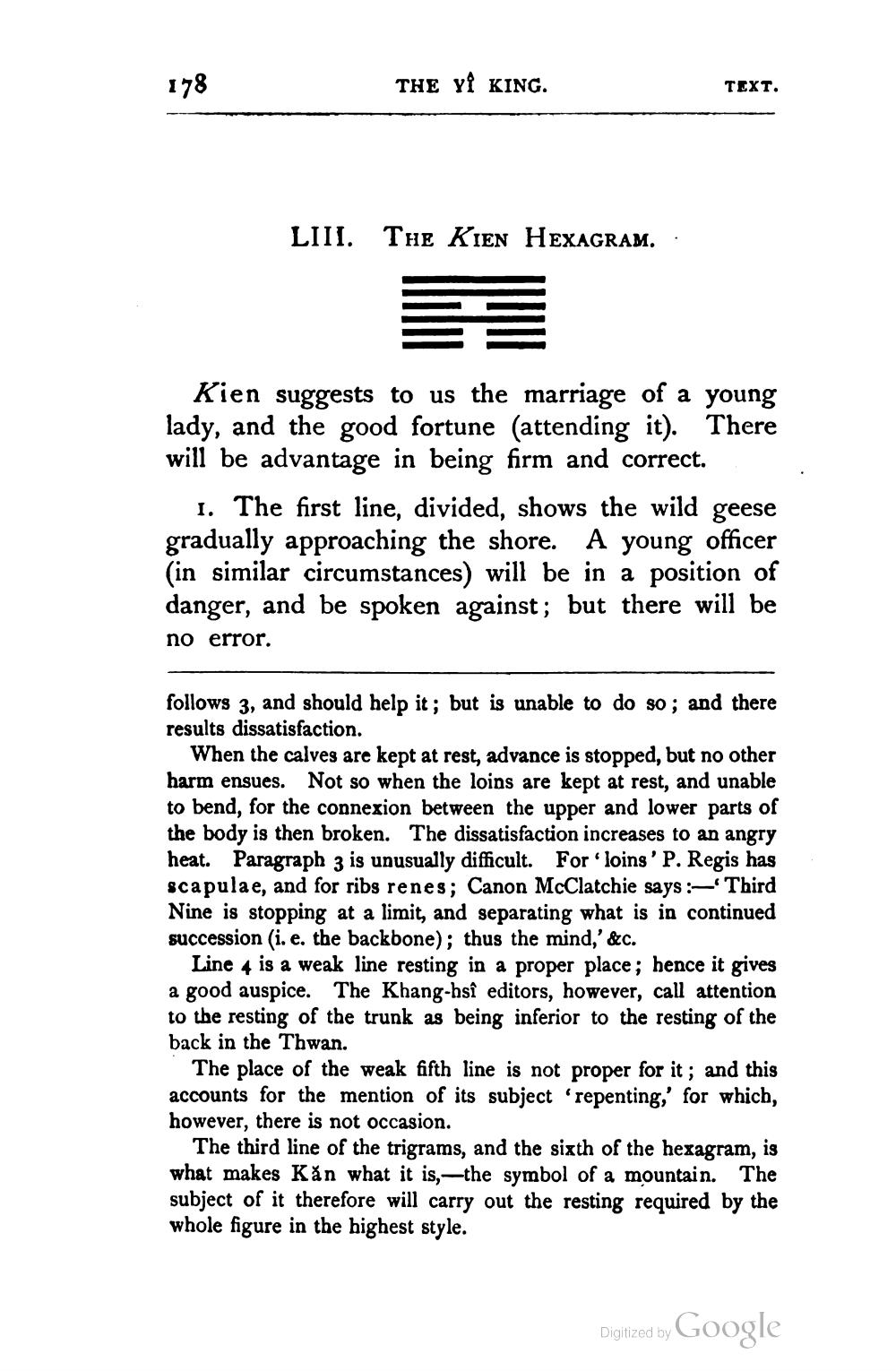________________
178
THE YI KING.
TEXT
TEXT.
LIII. The KIEN HEXAGRAM..
Kien suggests to us the marriage of a young lady, and the good fortune (attending it). There will be advantage in being firm and correct.
1. The first line, divided, shows the wild geese gradually approaching the shore. A young officer (in similar circumstances) will be in a position of danger, and be spoken against; but there will be no error.
follows 3, and should help it; but is unable to do so; and there results dissatisfaction.
When the calves are kept at rest, advance is stopped, but no other harm ensues. Not so when the loins are kept at rest, and unable to bend, for the connexion between the upper and lower parts of the body is then broken. The dissatisfaction increases to an angry heat. Paragraph 3 is unusually difficult. For loins' P. Regis has scapulae, and for ribs renes; Canon McClatchie says :- Third Nine is stopping at a limit, and separating what is in continued succession (i. e. the backbone); thus the mind,' &c.
Line 4 is a weak line resting in a proper place; hence it gives a good auspice. The Khang-hsî editors, however, call attention to the resting of the trunk as being inferior to the resting of the back in the Thwan.
The place of the weak fifth line is not proper for it; and this accounts for the mention of its subject repenting, for which, however, there is not occasion.
The third line of the trigrams, and the sixth of the hexagram, is what makes Kän what it is the symbol of a mountain. The subject of it therefore will carry out the resting required by the whole figure in the highest style.
Digitized by Google




